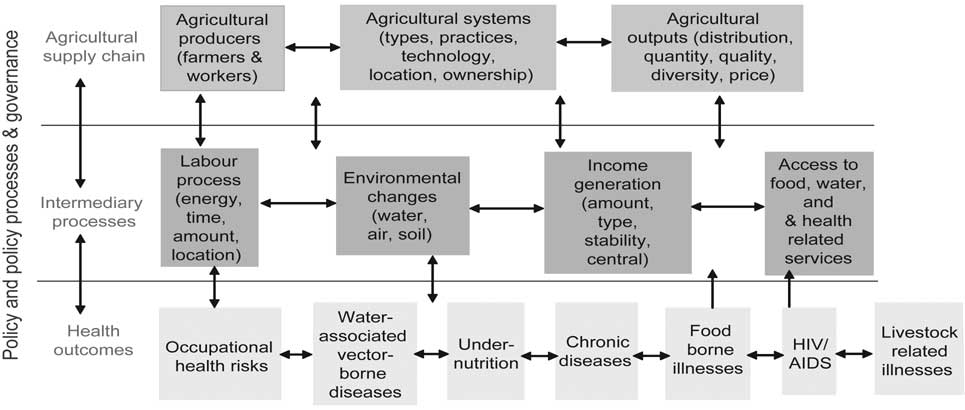
| Previous | Return to table of contents | Search Reports | Next |
| « Back to weltagrarbericht.de | ||
116 | IAASTD Global Report
|
concerning the labor requirements of different OA systems. Labor demands in organic farming could deter younger generations from farming, but unemployment could be alleviated, since the labor is more evenly spread over a growing season (Pimentel, 1993; Sorby, 2002; Granatstein, 2003; Pimentel et al., 2005). Commercial challenges include narrowing profit margins; regulatory overload; increased competition; and the need for constant innovations to stay ahead of consumer trends (Roth, 1999), as well as uncertain implications of large-scale corporate entry into the market. These questions have prompted FAO to propose a framework for socioeconomic analysis focusing on ecological, economic and social performance as an instrument for farmers and decision makers to understand the problems, tradeoffs and outcomes in alternative scenarios for a range of OA systems (Scialabba, 2000). Agriculture and human health. The interrelations between agriculture and human health are complex (Figure 2-9). The two are mutually and directly dependent on each others' status and performance. Agriculture contributes to good health through provision of food, fuel, fiber, fodder, materials for shelter and medicines. On the other hand, agricultural activities contribute to poor health through produce with nutritional deficiency; food-borne diseases; food poisoning; chemical pesticide residues; and a range of occupational hazards (including, for instance, induced hazards such as schistosomiasis and malaria that may be induced by irrigation developments). Similarly, human health also affects agriculture either positively or negatively. It requires a healthy individual and society to generate a productive agricultural performance. Hence individuals or societies with poor health are unable to provide the necessary quality human input in agricultural activities, leading to poor agricultural productivity (quantitatively and qualitatively) and low incomes that in turn perpetuates poor health-a vicious circle. The interrelationship between agriculture and human health is mediated by the natural environment, human culture and technological inputs. How to achieve equitable |
food production delivering optimum nutrition for health requires a better understanding of the interplay between agriculture and environment, culture, and technical capacity, and how this interplay changes over time (Lang, 2006; Snowden, 2006) (Table 2-6). 2.4 Lessons from the Past: Implications for the Future AKST encompasses different kinds of knowledge produced by numerous agencies and actors, notably but not only farmers. The complexity of the diverse and often unpredictable ways in which knowledge is generated justifies a systemic view of the processes involved in AKST. Well-evidenced but divergent and often conflicting interpretations exist of the contributions of AKST to such societal goals as increased productivity, environmental and social sustainability and equity as well as to societal knowledge about the damaging effects of agricultural technologies in different conditions of use. The resulting multiple narratives of past AKST processes and arrangements are not equally heard or recognized. Political power and economic influence has privileged some types of AKST processes, actors and institutional arrangements over others. Dominant institutional arrangements established the privileged interpretations of the day and set the agenda for searching for and implementing solutions. The choice of historical narrative used to explain past events and the AKST options brought into farm practice has important implications for setting future priorities and projecting the future design of AKST. Special effort has been made here to render an account from differing perspectives of past and often yet unresolved controversies regarding AKST in order to present as comprehensive as possible an assessment of the effectiveness of different AKST systems in promoting innovations associated with a range of policy goals Three main lessons regarding the effectiveness of AKST in relation to the combined goals of sustainability and development are drawn: the critical importance of partnerships, the crucial role of educating farmers in their vocation and the role of public policies and regulations. |

Figure 2-9. Linkages between agriculture and health. Source: Hawkes and Ruel, 2006.
| Previous | Return to table of contents | Search Reports | Next |
| « Back to weltagrarbericht.de | ||